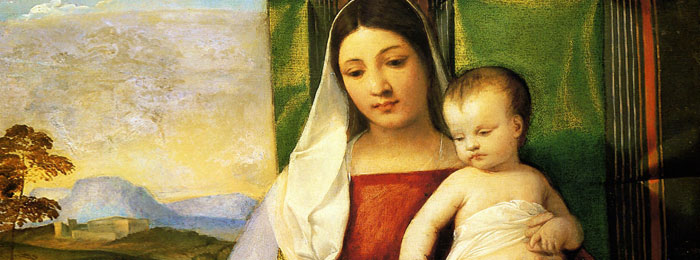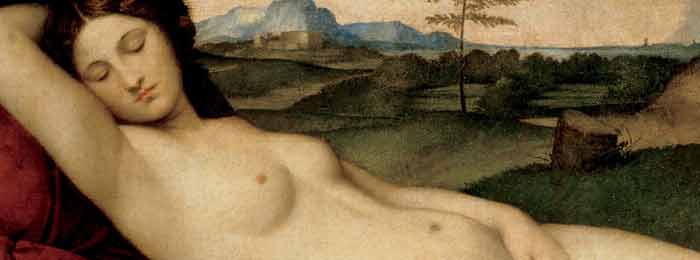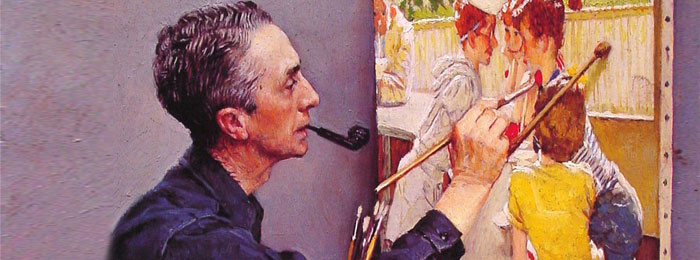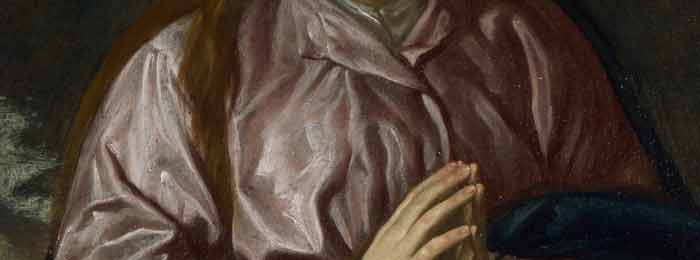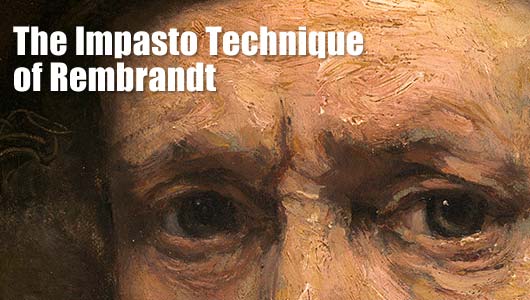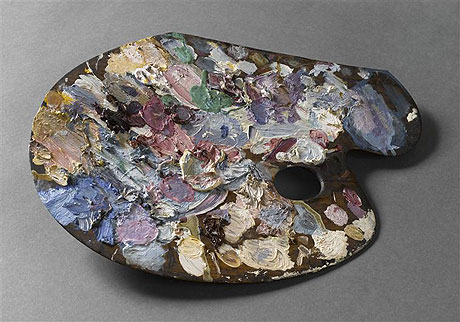On 23 Aug, 2015 With
Oil painting techniques:Titian’s Palette Titian, the greatest Italian Renaissance painter of the Venetian school. He was recognized early in his own lifetime as a supremely great painter, and his reputation has in the intervening centuries never suffered a decline. Titian was one of the most versatile of Italian painters, equally adept with portraits, landscape backgrounds, and mythological and religious subjects. His painting methods, particularly in the application and use of color, would exercise a profound influence not only on painters of the Italian Renaissance, but on future generations of Western art. In 1590 the art theorist Giovanni Lomazzo declared him “the sun amidst small stars not only among the Italians but all the painters of the world.” During the course…
Read More
On 18 Aug, 2015 With
Venetian Painting Techniques The painting techniques employed by Northern Renaissance artists strongly influenced the work of renowned painters, such as Titian and Giorgione, during the Italian Renaissance. Venetian artists also greatly impacted the styles of this period, notably the Van Eyck brothers. The oil painting techniques developed by these Flemish painters around the year 1400 combined the use of egg tempera and oil painting, with the underpainting being created using a grisaille technique of tempera, while pure colored oil glazes were carefully applied on top. This combination painting technique added remarkable lustre to their small panel paintings, resulting in striking jewel-tones, the most vivid hallmark of the brothers’ famous style. Prior to the Van Eyck brothers’ success with their combination…
Read More
On 1 Aug, 2015 With
Acrylic Paint or Oil Paint? Trying to decide which type of paint to use to paint your next art masterpiece? Should you go with the tried and true oil paints, or should you try the newer medium of acrylic paint? Each of these types of paints has their pros and cons which you should investigate so that you can choose the medium that suits your painting style. You are the artist, you make the call. Oil paint, the traditional medium, is basically powder pigments mixed with clear linseed oil. This paint is slow drying and for that reason is perfectly suited for blending colors together smoothly with plenty of time to contemplate the painting’s progress and still have time to…
Read More
On 24 Feb, 2015 With
Ever since the knowledge of the great oil painting techniques of the Renaissance was so mysteriously lost, about the end of seventeenth century, artists have been trying vainly to rediscover the methods of such masters as Titian, Rubens, Rembrandt and Velasquez, as well as of their predecessors–Jan Van Eyck, Memling, Giovanni Bellini and others, though not allowing for the same facility of execution on a large scale, were nevertheless were nevertheless equally as brilliant and durable. It has been evident to every artist who has worked in the medium of oil paint for the last two centuries or more, that certain qualities of color and modelling and brilliance of surface which seem to have been the common Possession of earlier…
Read More
On 24 Jun, 2013 With
Creating Impastos in Oil Paintings The simplest way to create an impasto surface is to apply paint in large amounts, usually with either a brush or palette knife. Commercial oil colors have a heavy consistency, so this can be achieved by working directly from the tube applying the colors in thick layers. Opacity and built-up texture are usually interrelated, with much of the thickest impasto consisting of solid and opaque pigments, such as lead white or titanium white. Passages of thickly applied paint can also be translucent, so extender pigments are chosen that supply both bulk and transparency. The Impasto Technique of Rembrandt Impasto is paint laid on a canvas or panel in quantities that make it stand out from…
Read More
On 1 Sep, 2011 With
Palettes of Famous Painters Of Gustave Moreau, the art critic Charles Blanc, whose writings (still essential reading) and triangle based colour-system are considered the most influential texts on colour theory, wrote in Le Temps, 1881: “One would have to coin a word for the occasion if one wished to characterise the talent of Gustave Moreau, the word colourism for example, which would well convey all that is excessive, superb and prodigious in his love for colour. … It is as if one were in the presence of an illuminator who had been a jeweller before becoming a painter and who, having yielded to the intoxication of colour, had ground rubies, sapphires, emeralds, topazes, opals, pearls and mother of pearl to…
Read More
On 4 Jul, 2011 With
What Édouard Manet learned from the OLD MASTERS? Manet’s composition reveals his study of the old masters, as the disposition of the main figures is derived from Marcantonio Raimondi’s engraving The Judgement of Paris (c. 1515) after a drawing by Raphael. Scholars also cite two works as important precedents for Manet’s painting Le déjeuner sur l’herbe, The Pastoral Concert, 1508, by Giorgione or possibly Titian (in the Louvre) and Giorgione’s The Tempest, both of which are famous Renaissance paintings. The Tempest also features a fully dressed man and a nude woman in a rural setting, as an important precedent for Manet’s painting Le déjeuner sur l’herbe. The painting Pastoral Concert, even more closely resembles Le déjeuner sur l’herbe, featuring two…
Read More
On 6 May, 2011 With
What they learned from the OLD MASTERS? Michelangelo
Read More
On 3 Feb, 2011 With
Painting techniques – Chiaroscuro Chiaroscuro (Italian: “light-dark”) in art is characterized by strong contrasts between light and dark, usually bold contrasts affecting a whole composition. It is also a technical term used by artists and art historians for using contrasts of light to achieve a sense of volume in modeling three-dimensional objects such as the human body. Further specialized uses include chiaroscuro woodcut, for coloured woodcuts printed with different blocks, each using a different coloured ink; and chiaroscuro drawing for drawings on coloured paper with drawing in a dark medium and white highlighting. Similar effects in the lighting of cinema and photography are also chiaroscuro. Origin in the chiaroscuro drawing Chiaroscuro originated during the Renaissance as drawing on coloured paper,…
Read More
On 31 Jan, 2011 With
Painting techniques – Tenebrism Tenebrism, from the Italian tenebroso (“murky”), (also called dramatic illumination) is a style of painting using very pronounced chiaroscuro, where there are violent contrasts of light and dark, and darkness becomes a dominating feature of the image. Caravaggio is generally credited with the invention of the style, but the term “Tenebrist” is more likely to be applied to later painters under his influence. However, Caravaggio is so closely associated with Tenebrism, that the word “Caravaggism” is sometimes applied in an almost synonymous fashion, or the phrase “Caravaggesque tenebrism” is sometimes used. The term is less used by art historians in recent decades, and lacks a clear definition. The word is capitalised by some art historians, and…
Read More


